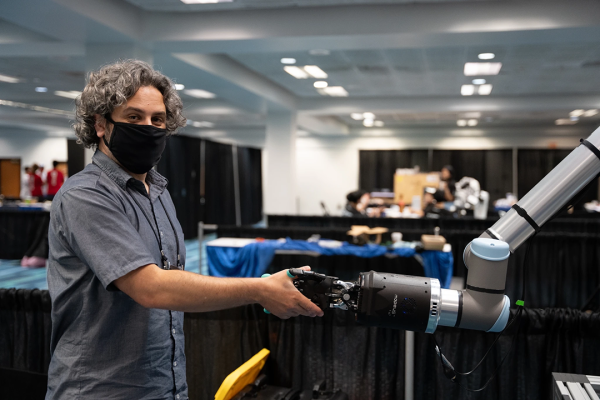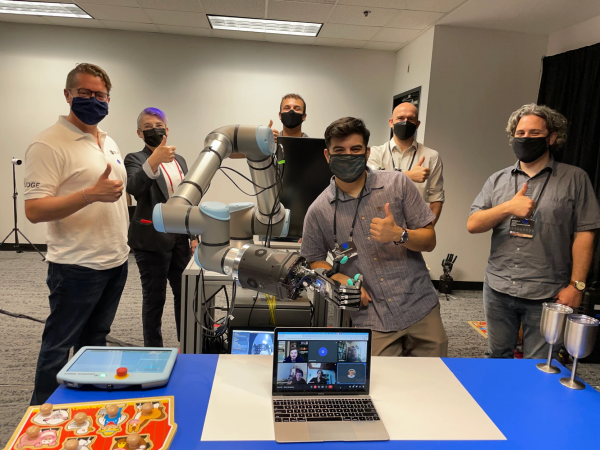CSULB Mechanical Engineering Alumni Has Robotics Touch
Tangible Research CTO and founder Jeremy Fishel traces his interest in tactile sensors and haptics to his work on a prosthetic hands project while a CSULB Mechanical Engineering undergraduate.
Fishel went on to earn Master of Science degrees in Biomedical Engineering and Aerospace & Mechanical Engineering in 2007 and 2009, and a Ph.D. in Biomedical Engineering in 2012, all from University of Southern California. In addition to his work with Tangible Research, he is now also an Assistant Professor of Mechatronic Engineering in the Department of Mechanical and Mechatronic Engineering and Advanced Manufacturing at California State University Chico.

Tangible Research recently joined Shadow Robot Co. and HaptX in a collaboration called Converge Robotics Group that reached the finals for the $10 million ANA Avatar XPRIZE with its Tactile Telerobot, which can transport human dexterity to a remote location in real-time.
“It was a nice recognition of our contributions to the field,” said Fishel, who served as Converge Robotic’s team lead. “It was also great to connect with so many others interested in this space. Most ideas are not unique. Connecting with these people to learn from their perspective and experience can save a lot of time and money.”
The Tactile Telerobot—which is in use in the United States, United Kingdom, and Asia— features Shadow Robot’s Dexterous Hands, HaptX Gloves DK2 with true-contact haptics, SynTouch’s biomimetic tactile sensors, and Universal Robots‘ robotic arms. Voysys contributed its low-latency video communication system for its teleoperation.

The Tactile Telerobot lets operators perform complex human tasks instantaneously across the globe, mimicking movements, displaying human-like and reactive behaviors, and allowing users to feel what the robot hands are touching. It can potentially be used to make engineering jobs safer, reduce the need for global travel, and let individuals spend more time at home with loved ones.
Fishel said he appreciated the practical emphasis of CSULB’s Mechanical Engineering program, which he described as “very formative.” In addition to the prosthetic hands project that he did in Dr. Hillar Unt's class, Fishel recalled investigating nitinol stents for Dr. Barclay Gilpin's lab, and the support he received from then-chair Dr. Hamid Hefazi. He spent his spare time wakeboarding at Marine Stadium, serving as team captain and building his own wakeboard. “It was terrible and heavy compared to the free ones we got from our sponsors, but I really had a lot of fun making it,” Fishel said.
Tactile sensors seemed like a logical research area to pursue. “Nobody was doing it well. We knew how important touch was to humans, and therefore the impact it could make in robotics, so it seemed like a place we could make an impact,” he said.
Fishel said exciting robotics applications can often overshadow more fundamental applications. “Researchers focus on what's exciting and not on what's important, particularly in academic research. The important challenges—robustness, repeatability, reliability, and cost—are difficult and fairly unexciting so they don't get much attention.”
Public hype often generates more interest than practical solutions, especially in the area of prosthetic hands. “If you want to make an impact in robotics, figure out how to make something cheap, useful, and that doesn't break once it leaves the lab,” he said.
Fishel didn’t intend to be a university professor. “I sort of stumbled into it, and I am really happy that I did — I really enjoy teaching,” he said.





